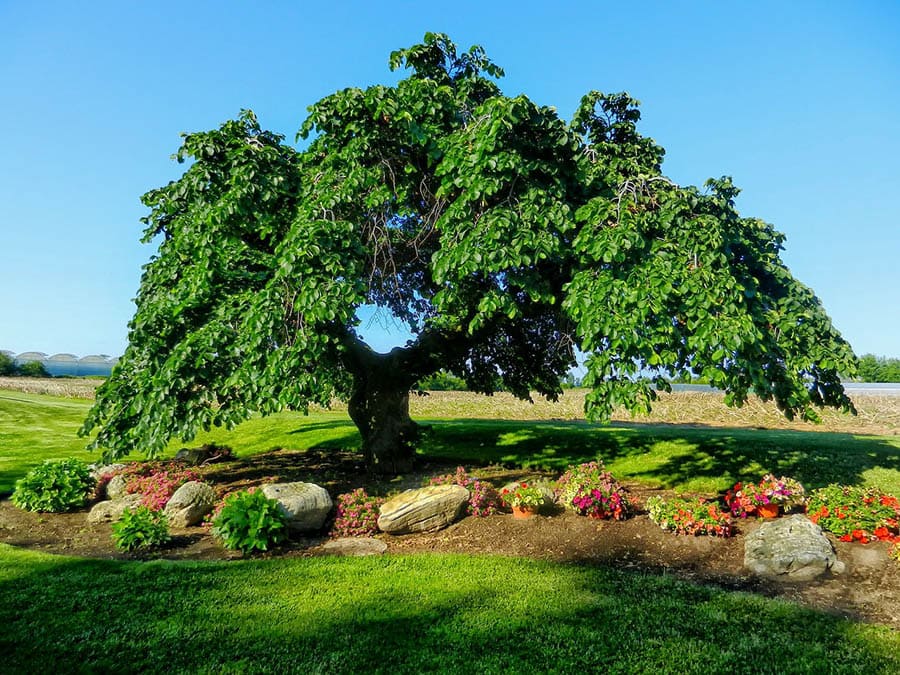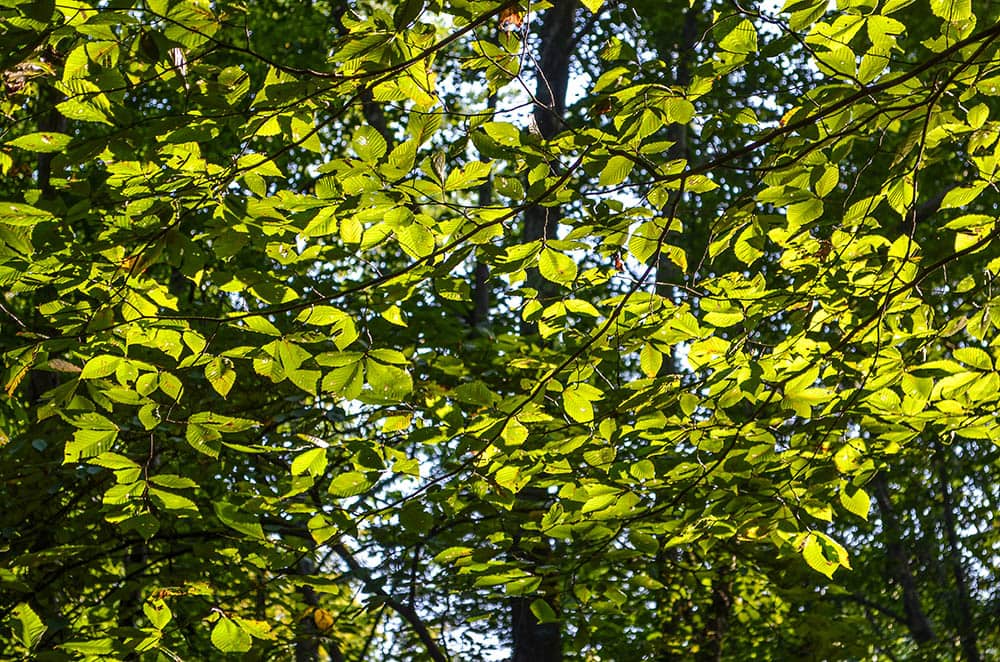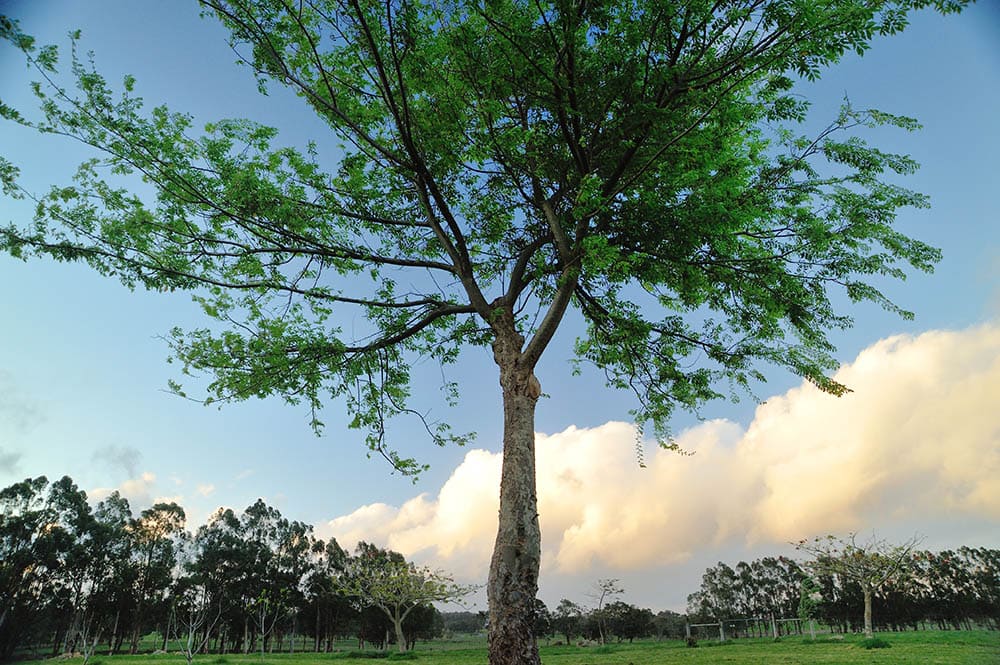10 Different Types of Elm Trees (With Pictures)
-

- Last updated:

Elm trees are native to parts of Europe and Asia. However, they can sprout well anywhere so long as there is a temperate climate and moderate rainfall. A fully matured elm tree can reach up to 150 feet high, with a huge trunk plumping up to 6 inches thick at the base. Even though this is the average size of many elm trees, they classify into different species, and each varies in size, shape, coloration, and leaf type.
Below, we will explore the different types of elm trees scattered worldwide. Let’s dive in!
The 10 Different Types of Elm Trees
1. Camperdown Elm Tree

The Camperdown Elm Tree is a variety of elm trees native to the United Kingdom. It was discovered between 1835 to 1840. This elm tree is unique because it has a compact and dense growth habit. It also has a weeping appearance with branches that droop downward.
Camperdown Elm Trees can reach a height of up to 50 feet and have a trunk diameter of 8 inches. They are primarily found in gardens and parks and are not tolerant to frost or wind.
The leaves of the Camperdown Elm Tree are dark green with a glossy finish. They are small in size, measuring only 2 to 3 inches long. The branches of this tree are covered in hairs, giving them a fuzzy appearance.
2. American Elm Tree

The American Elm Tree is the most common elm tree found in the United States. This is because it can grow well in more acidic soil. It also does not grow very tall, usually only reaching up to 75 feet with a trunk diameter of 8 inches.
The leaves of this elm tree are dark green and oval-shaped. They typically measure 3 to 4 inches long with a reddish-brown patch on the backside of each leaf.
This elm tree is mainly found along riverbanks and city streets. It prefers moist soil and has more wind resistance than other elm trees.
The bark of the American Elm Tree grows in furrowed ridges that are light gray or brown. It can also grow in a multi-stem clonal colony because it readily sprouts from the roots.
3. Cherry Bark Elm Tree
The Cherry-Bark Elm is a large, bushy tree with an overall round shape. This type of elm has smooth bark and samaras that are elliptical rather than round. It can grow in temperate climates across North America, Europe, Australia, and Asia.
The tree has simple, heart-shaped leaves with serrated edges. It is the least susceptible of all elms to Dutch elm disease, making it a popular choice for landscaping.
4. Slippery Elm Tree

The Slippery Elm Tree is a species of elm found in the Eastern half of the United States. The bark of the slippery elm is very smooth and has a reddish-green color—the tree blooms in the spring with small, green flowers.
The leaves of the slippery elm are broad and have a triangular shape. They are dark green on the top and lighter green on the bottom. The leaves are covered in a sticky mucilage that gives the tree its name. This mucilage can make tea, which is high in Vitamin C and other nutrients.
The Slippery Elm is vulnerable to the Dutch elm disease causing the trees not to reach maturity.
5. European White Elm Tree

Its predominantly found in Europe along the banks of rivers and streams. This is because its roots are not very tolerant of saline soils. Its bark is a pretty grained ash color with a light greenish-gray hue. The leaves are a glossy dark green and measure about 6 to 12 cm in length—the European White Elm Tree blooms with bright red flowers in the spring season.
6. Cedar Elm Tree
The Cedar Elm Tree is found in the United States and Canada. This particular elm has a very attractive bark that peels off, revealing a bright green layer underneath. There are corky ridges that run straight through the bark, reminiscent of an alligator skin texture.
The Cedar elm tolerates drought, pollution, and poor soil, making it a popular choice for urban landscapes. The tree has a broadly rounded crown with leaves that are a deep green color. They are simple in shape with a serrated edge.
7. David Elm Tree
This is one of the smaller elm varieties. It’s a small deciduous tree with a dense canopy that typically grows to a height of 15 to 25 meters. The David Elm Tree prefers moist wetlands and struggles to grow in areas outside its native regions.
The bark of the David Elm is grayish-brown in color, with deep fissures running horizontally across it. The oblong leaves have a sharp point and are glossy dark green on top and pale on the bottom.
The tree serves as a parent to many hybrids and cultivars. It also has ornamental value due to its small size and attractive bark.
You might also be interested in: 14 Types of Fir Trees
8. Siberian Elm

The Siberian Elm is mainly known as the dwarf elm. It is a small, deciduous tree that typically grows to a height of 35 to 65 ft. It is native to Central Asia, Korea, Tibet, the Russian Far East, Mongolia, and Eastern Siberia.
The Siberian Elm has perfect apetalous flowers that bloom in the early spring season. The leaves of the Siberian Elm are a glossy green color and have a serrated edge.
The tree is resistant—though not immune—to Dutch elm disease. The Siberian Elm also tolerates shade and drought, making it a popular choice for landscaping.
9. English Elm

The English Elm averages a growth rate of about 3 feet per year and can reach a height of up to 120 feet. It is one of the tallest elm trees and has a canopy spread to 50 feet. The English Elm is mostly found in the United Kingdom but can also be found in other parts of Europe and North America.
The bark of the English Elm is fissured and rough and adopts a grey-brown color throughout the growth period. The leaves are 4-9 cm long and have a round or oval shape.
The English Elm is a hermaphrodite and typically flowers in the early spring. The tree is susceptible to Dutch elm disease and Elm Yellows.
10. Chinese Elm Tree

The Chinese Elm is often called the Lacebark Elm because of its exfoliating bark. The bark is gray, green, brown, orange, and gray and peels off in layers. It is a fast-growing tree that can reach 60 to 80 feet.
The Chinese Elm is found in temperate climates across North America, Europe, Asia, and Australia. It is a popular choice for landscaping because it is fast-growing and tolerant of drought, salt, and pollution. The tree has a vase-shaped crown with dark green leaves and a serrated edge.
Bottom Line
Elm trees are one of the most popular trees because they have a lot to offer. They grow quickly, tolerate drought and poor soil, and make great landscaping choices. The article provided 10 different types of elms that you should know about if elms interest you as an investment or just something pretty to look at while walking down your street.
- You might also beinterested in: 20 Different Types of Maple Trees
Featured Image Credit: Pixabay
Contents


